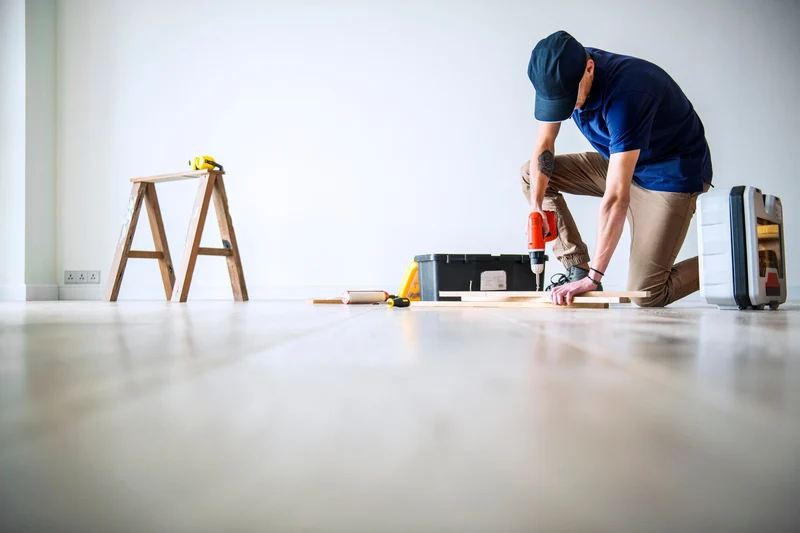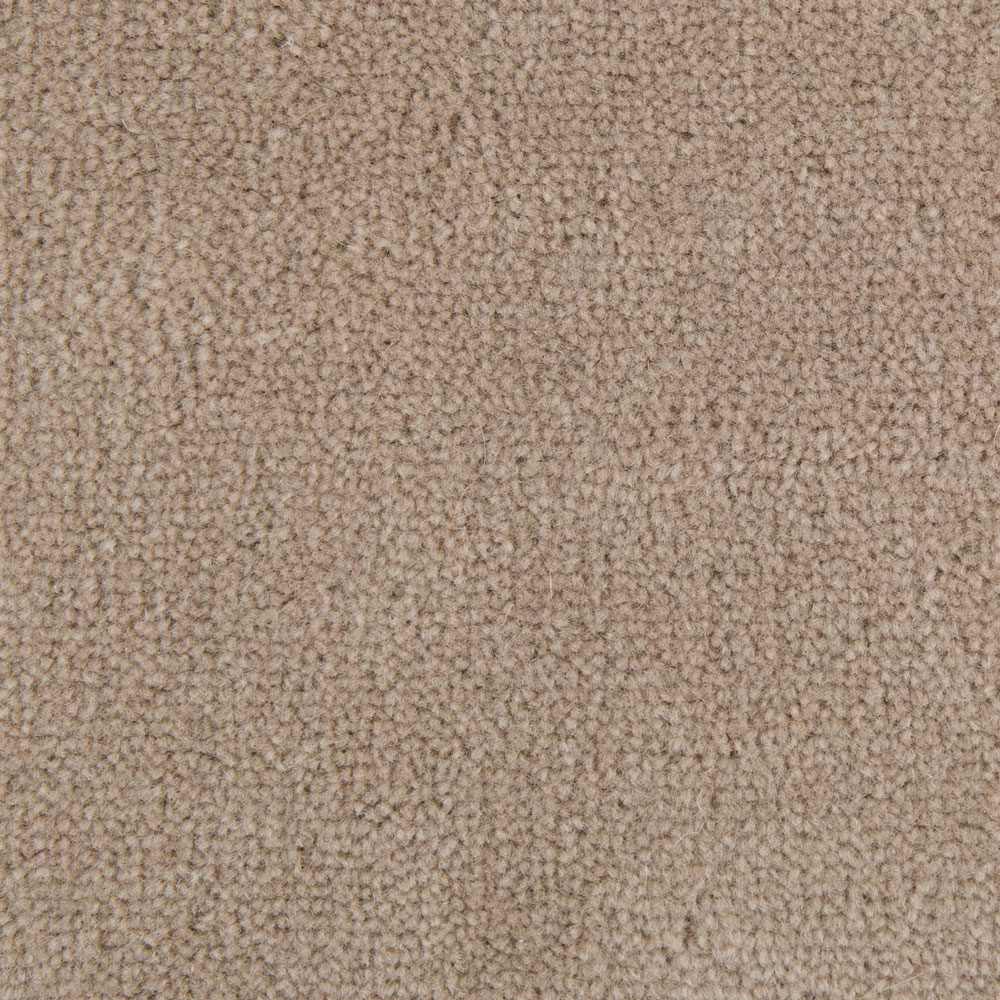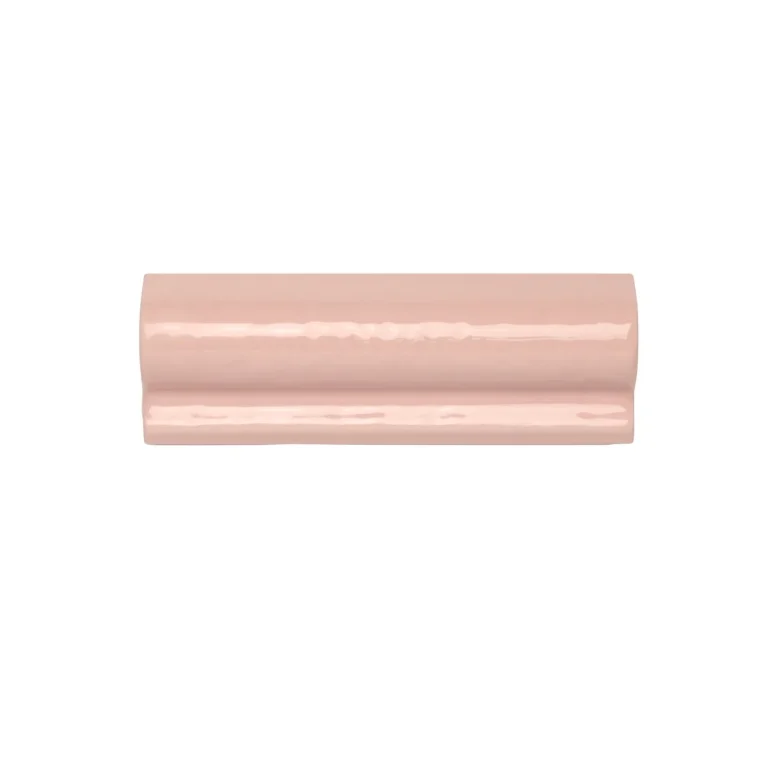Laminate flooring has emerged as a favored option for homeowners seeking an economical yet aesthetically pleasing alternative to hardwood flooring. This article provides a comprehensive overview of laminate flooring, encompassing its definition, installation process, and the various factors that affect its cost.
It details the average expenses related to both the flooring and installation, outlines potential additional costs, and examines the advantages and disadvantages of laminate flooring. Whether one is contemplating a do-it-yourself project or engaging the services of a professional, this guide aims to assist in making informed decisions.
What is Laminate Flooring?
Laminate flooring is a popular choice among homeowners due to its affordability, versatility, and aesthetic appeal. This synthetic material mimics the appearance of wood or stone while offering better resistance to wear and tear, making it suitable for various environments, including homes with pets.
Moreover, high-quality laminate options are available that provide both durability and a stylish finish, ensuring that the flooring enhances the overall decor of any room. Water-resistant flooring options in laminate are also becoming increasingly prevalent, catering to areas that may be exposed to moisture, such as kitchens and bathrooms.
How is Laminate Flooring Installed?
The installation process of laminate flooring involves several critical steps to ensure a smooth and professional finish, which can vary depending on the area being covered and the specific type of laminate chosen.
Initially, proper floor preparation is essential; this includes assessing the subfloor condition and deciding on the appropriate underlay options that may help with insulation and soundproofing.
Homeowners can choose to hire professional laminate floor fitters, whose costs might vary based on room size and complexity, or tackle the installation themselves, for which obtaining quotes for comparison can be beneficial.
What Factors Affect the Cost of Laminate Flooring Installation?
The cost to install laminate flooring can vary significantly based on various factors, making it essential for homeowners to understand what influences pricing before proceeding with their home renovation.
One of the primary contributors is the average price of the laminate material itself, which can range dramatically based on quality and style, including high-quality laminate and water-resistant options. In addition, labour costs can fluctuate depending on the complexity of the installation process, which is affected by the room shape, size, and any additional materials required, such as underlay or trim.
Quality of Laminate Flooring
The quality of laminate flooring plays a crucial role in determining both its cost and longevity, with high-quality laminate options often leading to better performance and aesthetics over time. While synthetic materials are used in various grades, investing in premium laminate can yield a more authentic look, enhanced durability, and greater resistance to scratches and moisture. Homeowners should be aware that while high-quality products may come with a higher price tag, they can provide better value in terms of lifespan and maintenance costs.
Understanding the distinctions among laminate flooring grades is essential for making an informed decision.
- Low-quality laminate options, while budget-friendly, typically feature a thinner wear layer, which makes them more susceptible to damage and wear.
- Mid-range products strike a balance, offering decent durability and aesthetics, although they may not withstand the test of time compared to their premium counterparts.
- In contrast, premium laminate flooring boasts enhanced features such as thicker planks, realistic textures, and superior finishes, significantly improving both its lifespan and visual appeal.
As a result, the inclination towards higher quality not only elevates the overall ambience of a space but also reduces long-term installation and replacement costs. Therefore, careful consideration of laminate quality can lead to informed choices that save money and wear over time.
Size of the Area
The size of the area where laminate flooring is to be installed is a significant factor that directly impacts the overall cost and labour involved in the installation process. Larger rooms require more material, which can increase the average cost of the project, while smaller spaces may benefit from economies of scale in terms of installation labour. Homeowners should consider these aspects when budgeting for their flooring project to ensure they get accurate quotes from fitters based on the specific dimensions of their rooms.
The effect of room size extends beyond mere material costs, influencing labour expenses and the intricacies of the installation. For example, larger spaces often necessitate increased planning and more skilled labour, potentially driving up the overall expenditure. In larger areas, the complexity of handling large sheets of flooring can lead to longer installation times, thus further impacting costs.
To effectively plan their purchases, homeowners can take the following steps:
- Measure the room dimensions accurately to determine the total area.
- Consult with flooring experts to discuss how size influences both material choices and labour.
- Obtain multiple quotes from installers to gauge the average costs associated with varying room sizes.
By considering these factors, homeowners can not only prepare a more precise budget but also optimise the entire installation process, ensuring that their investment delivers both aesthetic and practical value.
Subfloor Condition
The condition of the subfloor is paramount for a successful laminate flooring installation, as it must be adequately prepared to provide a stable and level surface for the new flooring. Without a proper foundation, the durability and appearance of the laminate could suffer significantly, leading to premature wear and costly repairs down the line.
Several common issues often arise during the installation phase that can impede progress or compromise the quality of the finished floor. For instance,
- Moisture: Excessive moisture can lead to warping or mould growth, making it essential to conduct a moisture test.
- Unevenness: A subfloor that is not level may require the use of a self-levelling compound.
- Remnants of old flooring: Old carpet or adhesive residues must be removed properly to ensure the new laminate adheres correctly.
To evaluate subfloor conditions, homeowners should visually inspect and measure the level of the space, ideally using a level tool or straight edge. Costs related to these preparations can vary significantly based on the extent of work required, including potential expenses for professional assistance in removing old flooring or addressing moisture issues.
Additional Materials Needed
Along with the laminate flooring itself, several additional materials may be required for a complete and professional installation, which can influence the overall cost. Underlay options are crucial for improving insulation and reducing sound while skirting boards and beadings are often necessary for achieving a polished finish that conceals gaps between the flooring and the walls. Choosing the right materials can enhance both the appearance and functionality of the flooring, but they also add to the total project cost.
Implementing a quality underlay is essential, as it acts as a barrier against moisture and enhances the comfort underfoot. There are various types, including foam, rubber, and fibre underlays, each offering unique benefits in terms of sound absorption and thermal properties.
Additionally, skirting boards serve not only as decorative elements but also protect the edges of the flooring. Beading, often used in conjunction with skirting boards, helps to neatly finish the flooring edges and provides a cohesive look.
The choice of material for these components, whether wood, MDF, or PVC, will significantly affect the overall project cost. Investing in the right materials ensures not only longevity but also adds value to the space.
Labour Costs
Labour costs are a critical component of the total expense involved in laminate flooring installation, as professional floor fitters charge based on various factors including their expertise and the complexity of the job. Typically, fitters will quote a daily rate for their services, which can vary widely depending on location and demand. Understanding how labour costs fit into the overall budget can help homeowners make informed decisions about whether to opt for professional installation or a DIY approach.
When considering the specifics, experience plays a significant role in determining the labour costs associated with laminate flooring installation, especially when incorporating aspects such as door trimming and beading options.
- More experienced fitters, who may charge different rates including day rate, tend to work more efficiently, ensuring a higher quality finish in less time.
- The nature of the installation project—such as the need for precise measurements, intricate designs, or even whether it is pet-friendly flooring—can also dictate costs.
Homeowners are encouraged to obtain multiple quotes from different contractors to make a fair comparison. While evaluating these estimates, it’s crucial to consider not only the price but also the fitter’s qualifications and customer reviews. Keeping an eye on the overall project scope and any potential additional costs—such as materials or equipment—will provide a clearer financial picture.
What is the Average Cost of Laminate Flooring, Installation, and Comparing Laminate Flooring?
Understanding the average cost of laminate flooring and installation is essential for homeowners looking to budget their renovation projects effectively. On average, the cost of laminate flooring, including thermal underlay options, can vary based on quality, brand, and style, typically ranging from affordable options to more premium selections.
Additionally, the cost of installation will depend on factors such as room size and labour requirements, making it crucial to gather multiple quotes for a comprehensive budget assessment.
Cost of Laminate Flooring
The cost of laminate flooring can vary widely, influenced by factors such as quality, style, and brand. Homeowners can find budget-friendly options that maintain a decent quality, while those seeking a more authentic look may wish to invest in high-quality laminate products, which typically come at a higher average price but offer greater durability and appeal.
When considering laminate flooring costs, it is essential to explore the spectrum of pricing available. Homeowners will find:
- Low-Cost Options: Ranging from £0.80 to £2.00 per square foot, these usually feature basic designs and thinner construction, suitable for temporary projects or rooms with less foot traffic, and ideal for those considering a DIY approach.
- Mid-Range Choices: Priced between £2.00 and £4.00 per square foot, these products offer better durability and a wider variety of styles, catering to homeowners looking for a balance between affordability and quality.
- High-Quality Selections: Often costing more than £4.00 per square foot, these laminates replicate the appearance of hardwood or stone and are manufactured with thicker cores, providing exceptional resilience.
Ultimately, selecting the right laminate involves evaluating personal needs against budgetary constraints while ensuring the chosen flooring meets lifestyle requirements.
Cost of Installation
The cost of installation plays a significant role in the overall budget for laminate flooring, with labour costs being one of the primary determinants. Homeowners should prepare for possible variations in installation costs based on room size, complexity of the project, and the chosen floor fitters, making comparison of quotes essential for an accurate financial plan.
Factors such as the layout of the space and the condition of the subfloor can dramatically influence these costs. When exploring options, it is vital to consider the following:
- Labour Rates: Different floor fitters may have varying hourly rates, which can significantly impact the overall expenses.
- Project Complexity: More intricate designs or unique room shapes usually require additional time and expertise, thereby increasing installation fees.
- Material Preparation: Ensure that the subfloor is adequately prepared before the flooring installation, as this can affect both durability and costs.
To navigate these aspects wisely, homeowners should request detailed quotes from multiple fitters, allowing for a side-by-side comparison of services and charges. This not only assists in securing a fair price but also ensures that any chosen professional meets the required standards for a successful laminate flooring project.
Comparing Laminate Flooring with Other Flooring Options
To understand laminate flooring costs better, let’s compare it with other popular flooring materials:
- Laminate vs. Hardwood Flooring
- Hardwood flooring is highly durable and adds value to a property but is significantly more expensive. Hardwood installation can cost between £50-£100 per square metre, making laminate a more budget-friendly option.
- Laminate vs. Carpet
- Carpet installation costs generally range from £15-£30 per square metre, making it cheaper than high-end laminate but often less durable in high-traffic areas.
- Laminate vs. Vinyl Flooring
- Vinyl flooring can be as affordable as laminate, with installation costs ranging from £15-£25 per square metre. Vinyl is often waterproof, making it better for moisture-prone areas than standard laminate.
What are the Additional Costs of Laminate Flooring Installation?
Along with the basic costs associated with laminate flooring and installation, homeowners should be aware of several additional costs that can impact the overall budget, including the removal of old flooring and the need for underlay and trim.
These additional expenses can add up quickly, making it essential to factor them into the overall project cost to avoid unexpected financial strain.
Removal of Old Flooring
Removing old flooring is often a necessary step in the installation process of new laminate flooring, and depending on the type of flooring being removed, this can incur additional costs. Carpet removal, for instance, may require professional services if the job is extensive, impacting the overall budget for the renovation project.
Understanding the full scope of the project is crucial for homeowners. Many factors can influence the total cost, including:
- Type of existing flooring
- Size of the area
- Labour costs in your region
Homeowners should also consider the potential for underlying issues, such as water damage or mould, that may require immediate attention. To ensure smooth progress, budgeting for these unforeseen expenses is essential.
Allocating an extra 15-20% of the estimated costs can provide a financial buffer, allowing for a more seamless flooring installation experience.
Underlayment
Underlay serves as an essential component in laminate flooring installations, providing sound insulation, moisture protection, and comfort underfoot. The choice of underlay options can vary, and while some may be less expensive, investing in high-quality underlay can improve the overall performance and longevity of the flooring.
Choosing the right underlay is vital as it influences not only the installation process but also helps in determining the overall cost. There are several types of underlay available, each designed for specific needs:
- Foam Underlay: This is the most common and economical choice, offering basic sound dampening and cushioning properties, making it suitable for most laminate floors, including pet-friendly options.
- Felt Underlay: Made from recycled fibres, this option is eco-friendly and provides excellent moisture control, ideal for installations in areas prone to dampness, such as in London homes.
- Cork Underlay: Renowned for its superior sound insulation and thermal properties, cork is a high-end option that enhances comfort but may come with a higher price tag.
- Combination Underlay: As the name suggests, this type merges foam, felt, or cork characteristics to address multiple concerns simultaneously, making it versatile yet more costly.
The selection of the right underlay not only shapes the installation experience but impacts the overall durability and maintenance of the laminate flooring, driving home the importance of this often-overlooked aspect.
Trim and Moulding
Trim and moulding, including door trimming and various beading options, are important finishing touches in laminate flooring installations that enhance the aesthetics and conceal gaps between the flooring and the walls.
These elements not only provide a polished look but also serve a practical purpose by protecting the edges of the laminate. When considering the installation of laminate flooring, it is crucial to select the appropriate styles of trim, such as quarter rounds or shoe moulding, that complement the overall design.
- Quarter Rounds: Ideal for covering small gaps along the skirting board, especially in pet-friendly homes.
- Shoe Mouldings: Offers a slightly more decorative edge.
- Flat Mouldings: Best suited for a minimalist design.
In terms of budgeting, these trims typically range from £1 to £5 per linear metre, depending on the material and design chosen. Incorporating these elements into laminate flooring projects not only enhances visual appeal but also can significantly influence the overall budget, making it imperative to factor in these costs for a comprehensive financial plan.
Is it Cheaper to Install Laminate Flooring Yourself?
One of the most pressing questions for homeowners considering laminate flooring is whether it is cheaper to install the flooring themselves rather than hiring professionals. While the allure of saving on labour costs is tempting, the actual savings can depend on various factors such as the complexity of the installation process, the availability of tools and materials, and whether engineered wood or solid wood flooring is being considered.
Understanding the pros and cons of a DIY approach versus hiring floor fitters is essential for making an informed decision.
How to Find a Reliable Laminate Flooring Installer?
Finding a reliable laminate flooring installer, whether through recommendations or services is a crucial step in ensuring a successful renovation project, as the quality of installation can significantly impact the longevity and performance of the flooring.
Homeowners should seek out reputable floor layers, compare quotes and quotations, and check customer reviews to make an informed choice. Additionally, asking for recommendations from friends or local trade associations can also lead to trustworthy options.
What are the Benefits of Laminate Flooring?
Laminate flooring offers numerous benefits that make it an attractive choice for a wide variety of homeowners, particularly those with pets or children. For helpful guidance, consider reviewing an installation guide to better understand the process.
First and foremost, laminate flooring is highly durable and resistant to scratches, making it an excellent option for high-traffic areas. Additionally, it requires relatively low maintenance compared to traditional wood or carpet, and with the right care and maintenance tips, laminate flooring can look brand new for years.
What are the Drawbacks of Laminate Flooring?
While laminate flooring boasts many advantages, it also has its drawbacks that homeowners should consider before making a final decision.
One significant concern is that while water-resistant flooring options are available, many laminate choices can be susceptible to moisture damage, which can limit their suitability in areas such as bathrooms and cellars.
Furthermore, despite its appealing aesthetic, laminate may not provide the same warmth and value as solid wood flooring over time. However, following proper maintenance tips can help maintain its appeal.

































